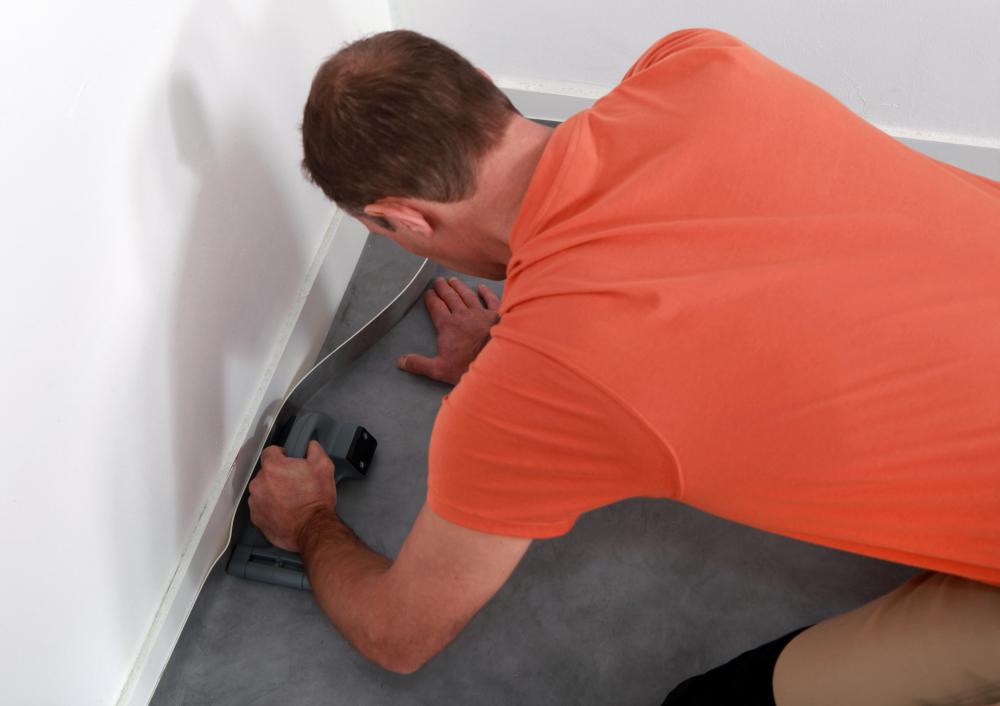At WiseGEEK, we're committed to delivering accurate, trustworthy information. Our expert-authored content is rigorously fact-checked and sourced from credible authorities. Discover how we uphold the highest standards in providing you with reliable knowledge.
What are the Best Tips for Installing do-It-Yourself Carpet?
Installing do-it-yourself carpet can be a complex task, but there are some tips to help simplify the job. Have all the necessary tools at hand before beginning, and be sure to purchase enough carpet to compensate for any cutting mistakes. Install carpet tack strips a slight distance from the wall and keep the edge of the padding inside the strips. When making a seam between two pieces, keep the carpet piles going in the same direction. The carpet edges must be cut straight at the seams to prevent overlaps and gaps from showing.
Several specialized tools are needed for installing do-it-yourself carpet. A knee kicker tool is usually required to fasten the carpet edges to the tack strips. The use of a power stretcher helps keep the carpeting smooth and wrinkle-free. A seam iron is needed to connect two pieces of carpet together. All of these tools should be acquired before beginning any do-it-yourself carpet installation.

Measuring and cutting mistakes often occur when performing a do-it-yourself carpet installation. Allow a little extra carpet in all directions to compensate for inexperience. It is usually better to spend a bit more on the extra carpet than to ruin an entire piece because of a mistake. Patterned carpeting generally produces more waste than other varieties because the patterns must be properly aligned at each seam. It is usually best to purchase approximately 5 percent more carpeting than the actual room measurements call for.

A good supply of carpet tack strips will be needed for most do-it-yourself carpet installation projects. These strips should not be placed too close to the baseboards; instead, locate the tack strips a slight distance away from the wall for a smoother appearance. It is best to leave a carpet thickness gap so that the material can be easily tucked under the baseboard. The carpet padding should be cut so that it fits inside of the perimeter of the tack strips because allowing the padding to overlap the tack strips will prevent the carpet from fastening properly and produce an unsightly raised area near the wall.
Proceed carefully when seaming two pieces of carpeting together. Patterned carpet pieces must match exactly before being joined. The pile direction of non-patterned carpeting should always be going in the same direction at the seams. The edges of the carpet must also be cut very straight to prevent the seam from showing, so a seam cutting tool may be needed for this part of the installation.
AS FEATURED ON:
AS FEATURED ON:












Discuss this Article
Post your comments